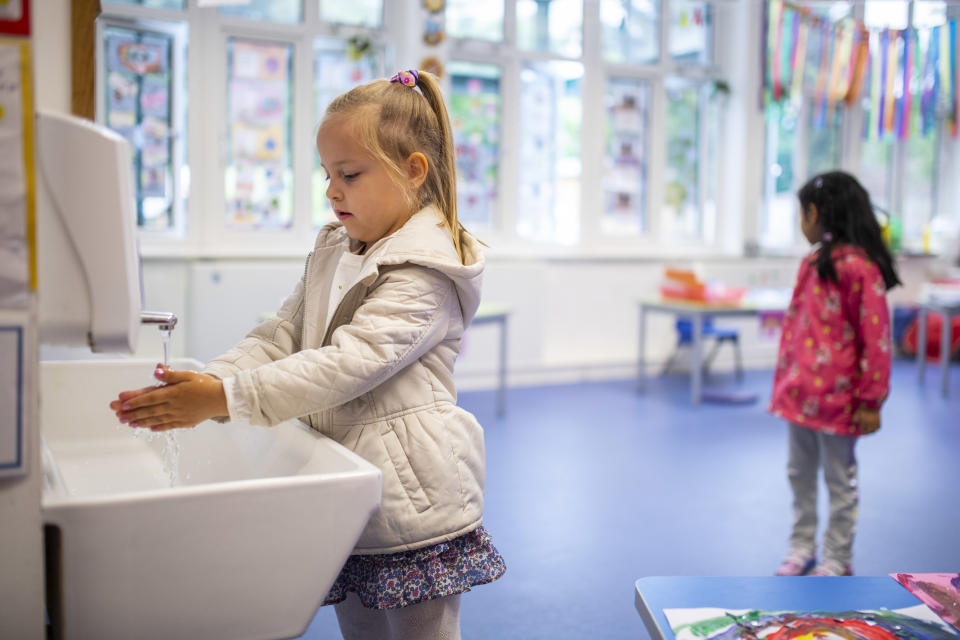Disinfecting textbooks and no assembly: Six ways schools will be different in September

It’s official: schools will fully reopen in September.
With the government making it mandatory for parents to send their children back to school, it has been under pressure to ensure pupils and teachers are kept safe.
That’s a task one doubtful teaching union has described as “mind boggling” in its complexity.
Schools will have to completely overhaul how they operate compared to before the coronavirus pandemic.
When the new academic year starts in a couple of months’ time, pupils will be returning to very different environments.
Here, Yahoo News UK trawls through Downing Street’s official guidance for reopening schools and explains six ways they will be different.
1. ‘Bubbles’
The “overarching principle” of the government’s plan is to reduce the number of contacts between children and staff.
To do this, schools have been told to put pupils in class or year group “bubbles” in order to reduce the risk of transmission.
The guidance reads: “Maintaining distinct groups or ‘bubbles’ that do not mix makes it quicker and easier in the event of a positive case to identify those who may need to self-isolate, and keep that number as small as possible.”
In secondary schools, teachers who have to work with different classes and year groups should keep two metres away from pupils and fellow staff.
2. No large gatherings
Because bubbles need to be kept apart, school assemblies are off the cards.
Similarly, to avoid busy corridors, schools have been told to consider staggered break times and lunch times.
Use of the staff room should also be “minimised”, with staff expected to take their breaks elsewhere.
3. Staggered start and end times? Reduced break times?
The government says in its guidance: “Schools should consider staggered starts or adjusting start and finish times to keep groups apart as they arrive and leave school.”
It said this could involve “condensed” or “staggered” break times, but with the same amount of teaching time.
An alternative would be to keep the school day the same, but start and finish later “to avoid rush hour”.
4. Regular hand washing

Schools must ensure pupils wash their hands with soap and water at regular intervals.
This includes when they arrive at school, when they return from breaks, when they move from room to room and before and after eating.
Hand sanitiser “stations” should also be provided.
5. Go home at the first sign of becoming unwell
Anyone in the school who becomes unwell with a coronavirus symptom – a new continuous cough, high temperature or loss of taste or smell – will be sent home immediately and told to self-isolate and book a test.
The school must subsequently alert its local Public Health England health protection team.
6. Regular cleaning
Schools must ensure all classrooms, shared areas and toilets are cleaned more frequently than they would have been before, as well as frequently touched surfaces.
Classroom resources such as books and games can still be used within bubbles, but must also be cleaned regularly.
The same applies to school-wide equipment that is shared between bubbles, such as sports and art equipment, as well as playground equipment.
Coronavirus: what happened today
Click here to sign up to the latest news, advice and information with our daily Catch-up newsletter
Read more about COVID-19
How to get a coronavirus test if you have symptoms
How easing of lockdown rules affects you
In pictures: How UK school classrooms could look in new normal
How public transport could look after lockdown
How our public spaces will change in the future
Help and advice
Read the full list of official FAQs here
10 tips from the NHS to help deal with anxiety
What to do if you think you have symptoms
How to get help if you've been furloughed


